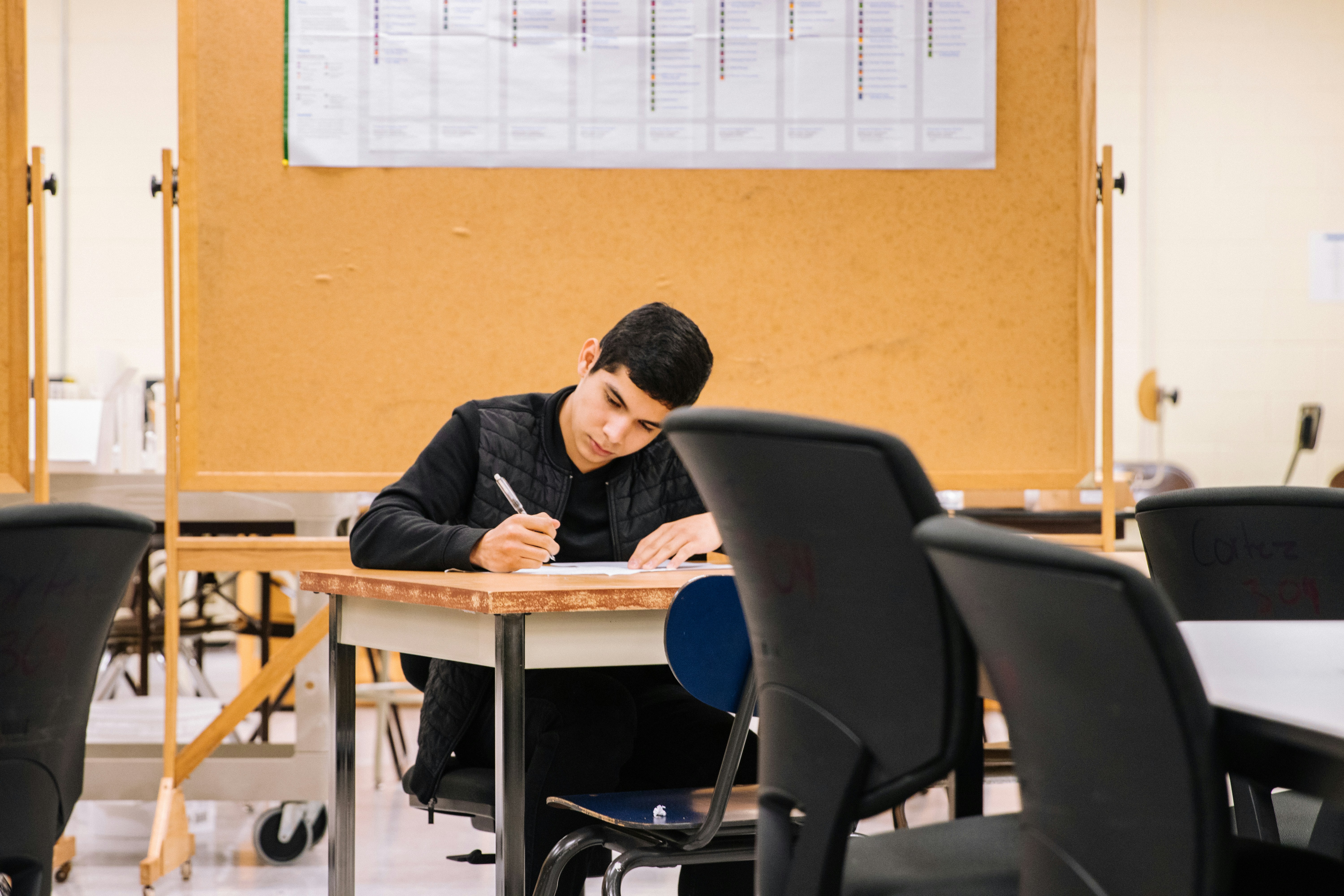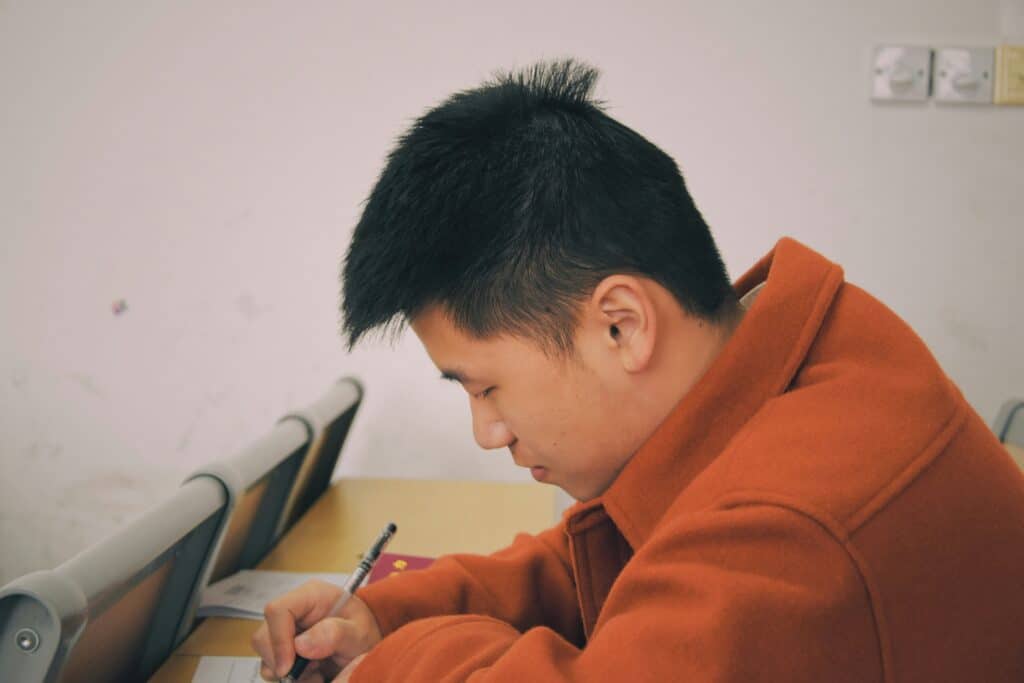June 02, 2025

How to Build Students’ Stamina in an Attention Economy
rebekah
June 23, 2025
Every minute, over 500 hours of video are uploaded to YouTube.
That’s not even factoring in TikToks, Reels, or the relentless stream of notifications blowing up our phones.
While the internet has its perks, it’s also rewired attention spans. This is the world Generation Z (10–24 years old) and Generation Alpha (0–9 years old) were born into, where algorithms keep them swiping and tapping faster than any teacher can ever deliver a lesson.
These diminishing attention spans pose a serious challenge. Luckily, there are strategies to help students build “attention stamina,” your secret weapon to fostering focus despite the chaotic pull of the digital world.
What is the Attention Economy?

The term “Attention Economy” isn’t new. It emerged in the late 1990s when Michael Goldhaber explored how attention became a currency in our tech-driven world, building on Herbert Simon’s earlier ideas.
Essentially, the Attention Economy treats your focus as a finite resource, something companies want to capture and monetize. Platforms like YouTube, Instagram, and TikTok are designed to grab your attention and hold onto it as long as possible, rewarding users for engagement and tech giants with ad revenue.
For students, the result is an addiction to instant gratification, leading to anxiety, multitasking habits, and an inability to focus on anything for more than a few minutes.
But attention is a skill, and with the right tools, it can be rebuilt.
How to Build Students’ “Attention Stamina”

The good news? Teachers can incorporate methods that support focus without making classrooms feel like military zones. Here’s how:
1. Encourage and Enforce “Tech Breaks”
Want your students to listen longer? Then don’t ignore their need for screen time. Research from 2013 shows that structured “tech breaks” actually reduce multitasking urges (and, surprisingly, overall anxiety).
A five-minute break after 15–30 minutes of intense focus lets students check their phones or clear their minds without derailing productivity. Simply set boundaries. For instance, “You can scroll for five minutes, but I need full focus after that.”
2. Balance Multimedia with Other Forms of Learning Material
It’s tempting to rely on video-based resources for classroom lessons. And indeed, tools like Stanfield’s emotional intelligence curricula are impressive, offering engaging content.
But variety is key. Mix it up. Don’t always rely on the same-old, same-old.
Use print handouts, group discussions, or just lectures (yes, a good old board-marker moment is still effective).
And here’s a radical idea—ditch all materials occasionally and just talk to your students, creating space for uninterrupted thought and interaction.
3. Prioritize Face to Face Interaction
Post-pandemic, many students struggle with social skills. According to a study in the Journal of School Psychology (Smith et al., 2021), face-to-face interactions were severely diminished during remote learning, resulting in increased defiance and behavioral disruptions upon returning to classrooms.
To help rebuild that social stamina that was lost:
- Lead discussions that require collaboration.
- Pair students up for projects instead of allowing endless solo tech work.
- Remind them why in-person dialogue matters.
4. Teach Students the Power of Meta-Cognition
The best learners know how they learn. Metacognition, or thinking about one’s thinking, is an easy skill to introduce in the classroom. Ask students:
- “What strategies worked for you today?”
- “Where did your attention drift?”
- “What could you do differently next time?”
Simple prompts like this turn students into active participants in their learning process, giving them tools to recognize and fix their focus issues independently.
5. Use Fewer Words While Teaching
When instructions take forever to explain, you lose the room. Succinct communication is key. Instead of lecturing for 10 minutes about a task, condense instructions into quick bullet points or short command sequences. Also, visuals (think infographics or charts) can cut down on word overload while keeping learners engaged.
6. Incorporate Visuals
Speaking of visuals, they aren’t just “nice-to-have”—they’re crucial in today’s Attention Economy. Gen Z and Alpha students have been molded by color, motion, and design. Create visually engaging slides, use concept maps, or throw in diagrams to make lessons easier to process. If students find it pleasing to look at, they’re much more likely to stay engaged.
7. Teach Students Strategies for What to Do When the Mind Wanders
Minds wander. It’s natural. Instead of reprimanding students for daydreaming about lunch or an upcoming soccer game, teach them how to redirect their attention.
Encourage them to acknowledge their thoughts without beating themselves up and refocus on the task at hand. A simple mantra like “pause, breathe, refocus” can work wonders. Give them these tools, and suddenly, a wandering mind isn’t a problem, just a pitstop.
8. Don’t Judge or Criticize, But Instead Give Time to Practice Redirection
If you want students to build stamina, they need practice. But here’s the thing: judgment and criticism won’t help them get there. Instead, approach it like a coach. Celebrate small victories (“You stayed focused for ten minutes straight—that’s huge!”) and let them practice redirecting their attention without fear of failure. Practice doesn’t make perfect, but it definitely makes progress.
9. Eliminate Distractions
It’s tough to focus when there are tapping pencils, buzzing phones, and gossip ping-ponging across the classroom. Set clear boundaries about what can and can’t be in the learning space.
For younger students, that might mean creating a “phone hotel” at the front of the room. For older ones, it could be asking them to silence their devices or use apps that help limit distractions. The fewer obstacles between them and their work, the better.
10. Set Timers
Timers aren’t just for baking cookies. They’re perfect for focus-building, too. Use them to set clear, manageable intervals for work.
Start with short periods, like 10-15 minutes, and gradually increase as stamina improves. When the timer dings, give students a quick break before the next round. They’ll get used to the rhythm and start to associate focus time with achievable goals.
11. Have Students Make Lists of What Distracts Them Most
What’s standing in the way of their focus? Phones? A chatty neighbor? The siren song of their doodles? Have students write down their top distractions. Once the list is done, discuss strategies to address them.
Maybe they can rearrange their seating, learn techniques to manage phone use, or create a mental cue to refocus when they notice their attention slipping. Ultimately, awareness is the first step to improvement.
12. Incorporate Physical Activity
Prolonged periods of sitting are an enemy to attention spans. Movement can help reset brains, release pent-up energy, and improve overall focus. Use active brain breaks like stretching, quick jumping jacks, or walking in place.
For younger kids, even a quick Simon Says session can do the trick. A little movement goes a long way in improving mental stillness.
13. Be Cognizant of Age Limits
Not all attention spans are created equal, and they absolutely aren’t fixed by willpower alone. A six-year-old is unlikely to stay focused for more than 30 minutes, and younger children even less.
Plan activities and lessons with these limits in mind, alternating focused work with breaks or hands-on activities. Pushing students to sustain focus beyond what they’re developmentally capable of is a losing battle—for both of you.
The Takeaway

Building attention stamina in students isn’t about forcing total, laser-sharp focus for hours on end. It’s about equipping them with tools to work with the attention they have and steadily build more.
With practice, kindness, and a few creative strategies, you can help your students learn how to focus longer, work through tough tasks, and thrive in today’s attention economy.
FAQ
How to gain the attention of the students?
Start strong. Use humor, visuals, or questions that grab their interest right away. Once you have their attention, minimize distractions and set clear expectations for focus time.
What is the 123 eyes on me strategy?
This popular classroom management tool uses a simple call-and-response technique. The teacher says, “123, eyes on me,” and students reply, “1, 2, eyes on you!” It’s a fun, direct way to command attention in busy classrooms.
How should you deal with students’ lack of attention?
Rather than punishing lack of focus, help students understand why it’s happening. Is the material too hard? Are they distracted by something outside class? Address the root cause, offer strategies like brain breaks or mindfulness, and make adjustments as needed.
How can a teacher improve the attention of a student?
Consistency is key. Use the strategies above, give them tools to manage wandering attention, and help them build stamina over time. Celebrate progress, stay patient, and remember that improvement takes time.


